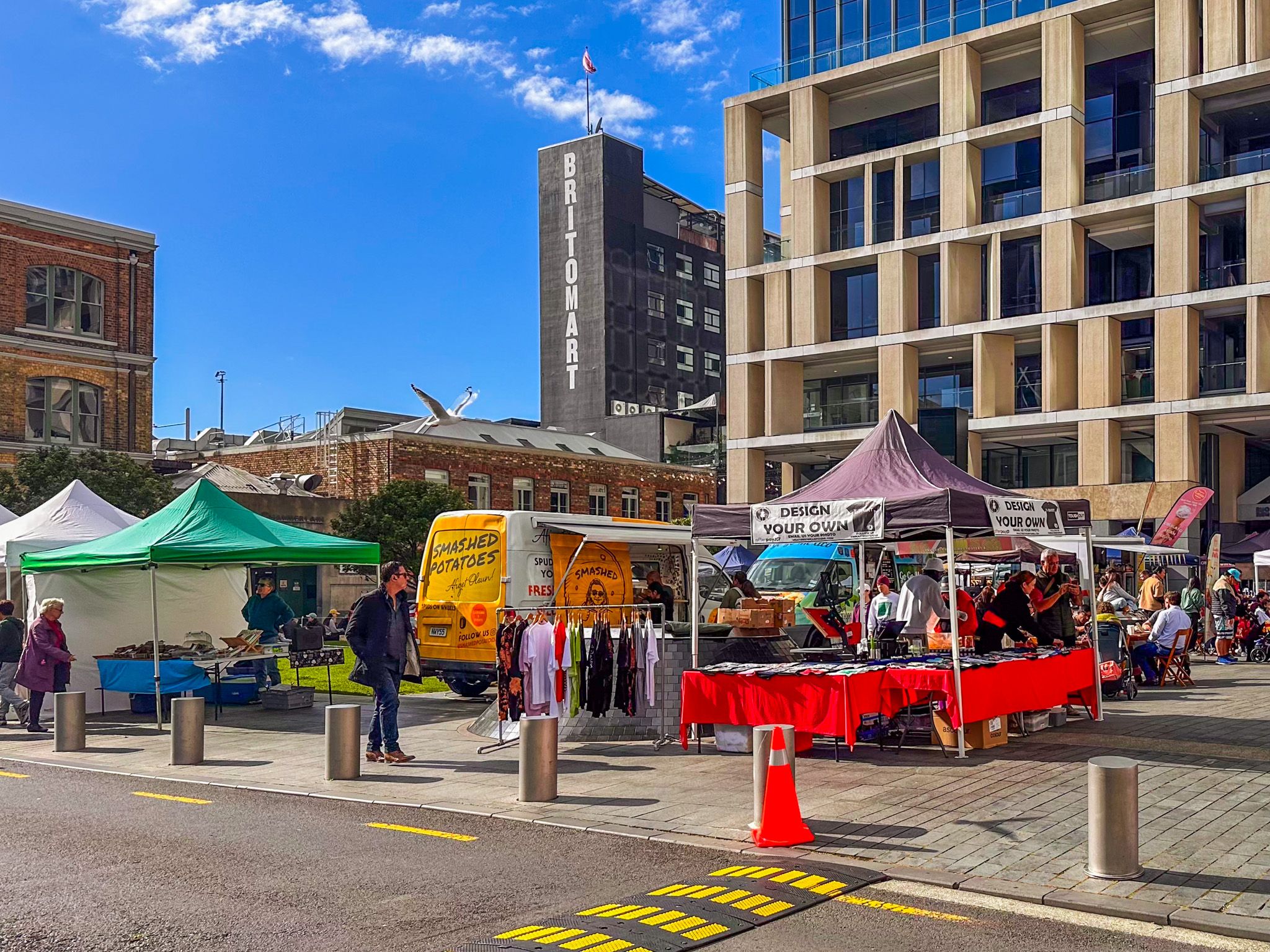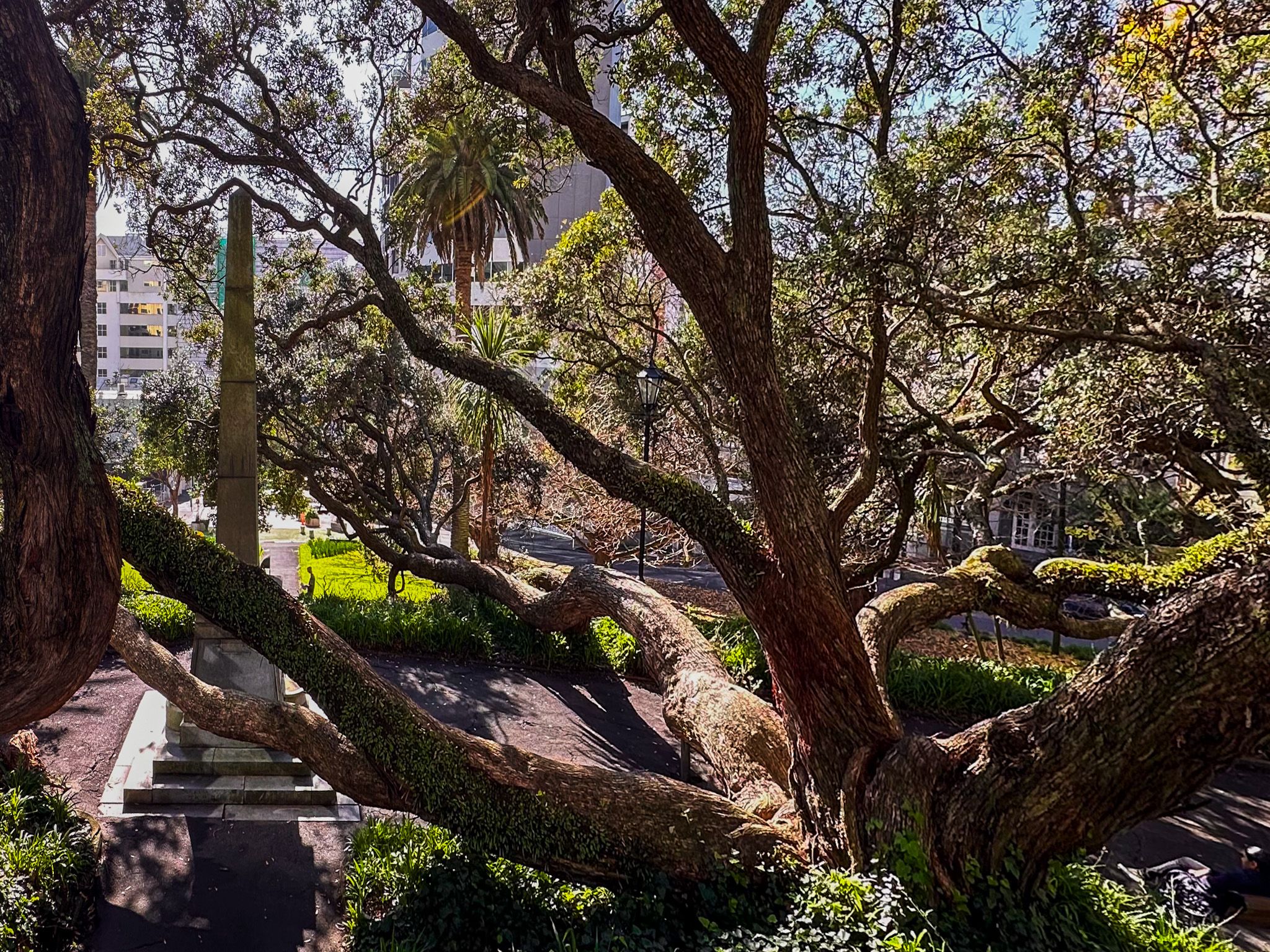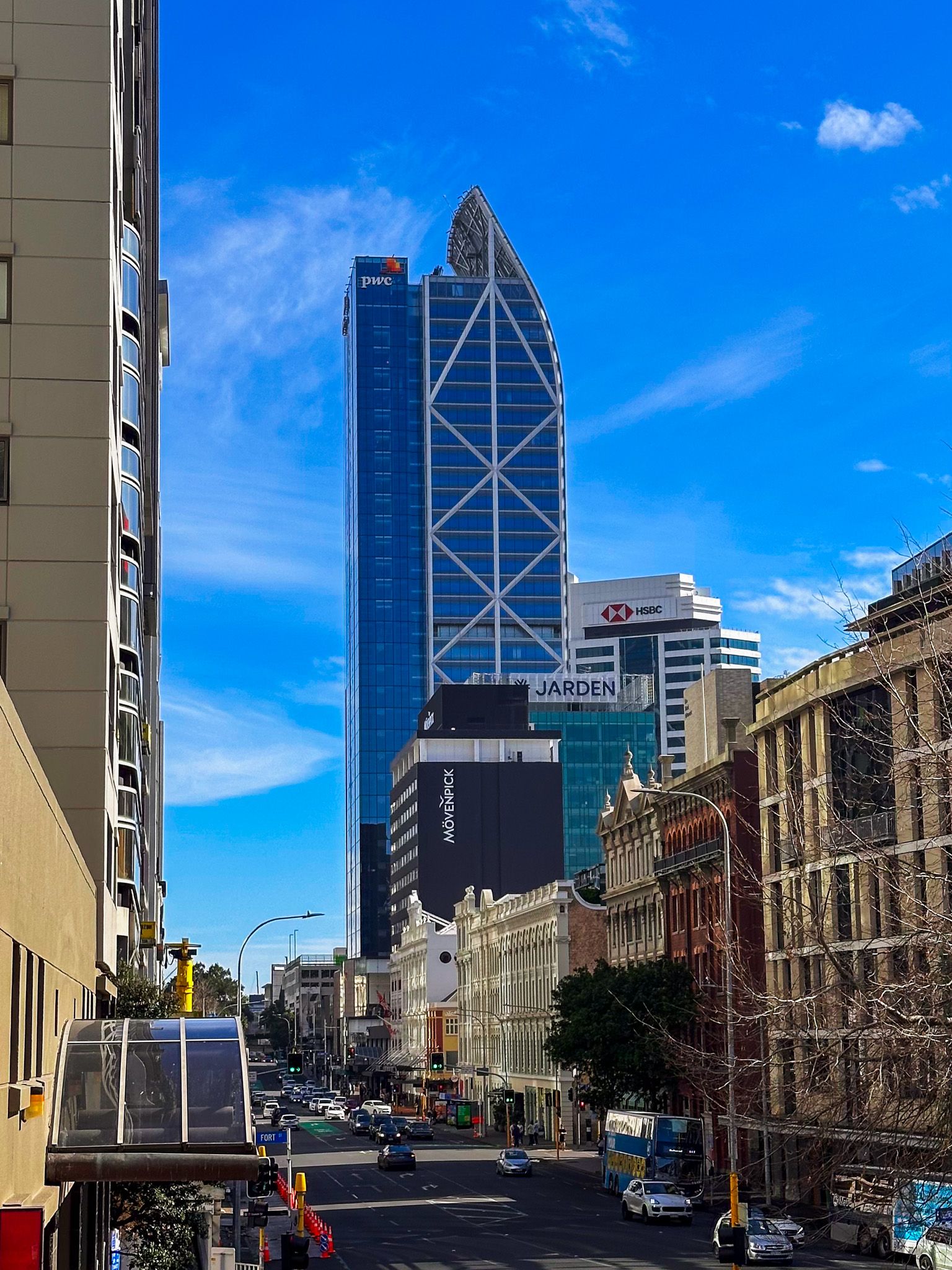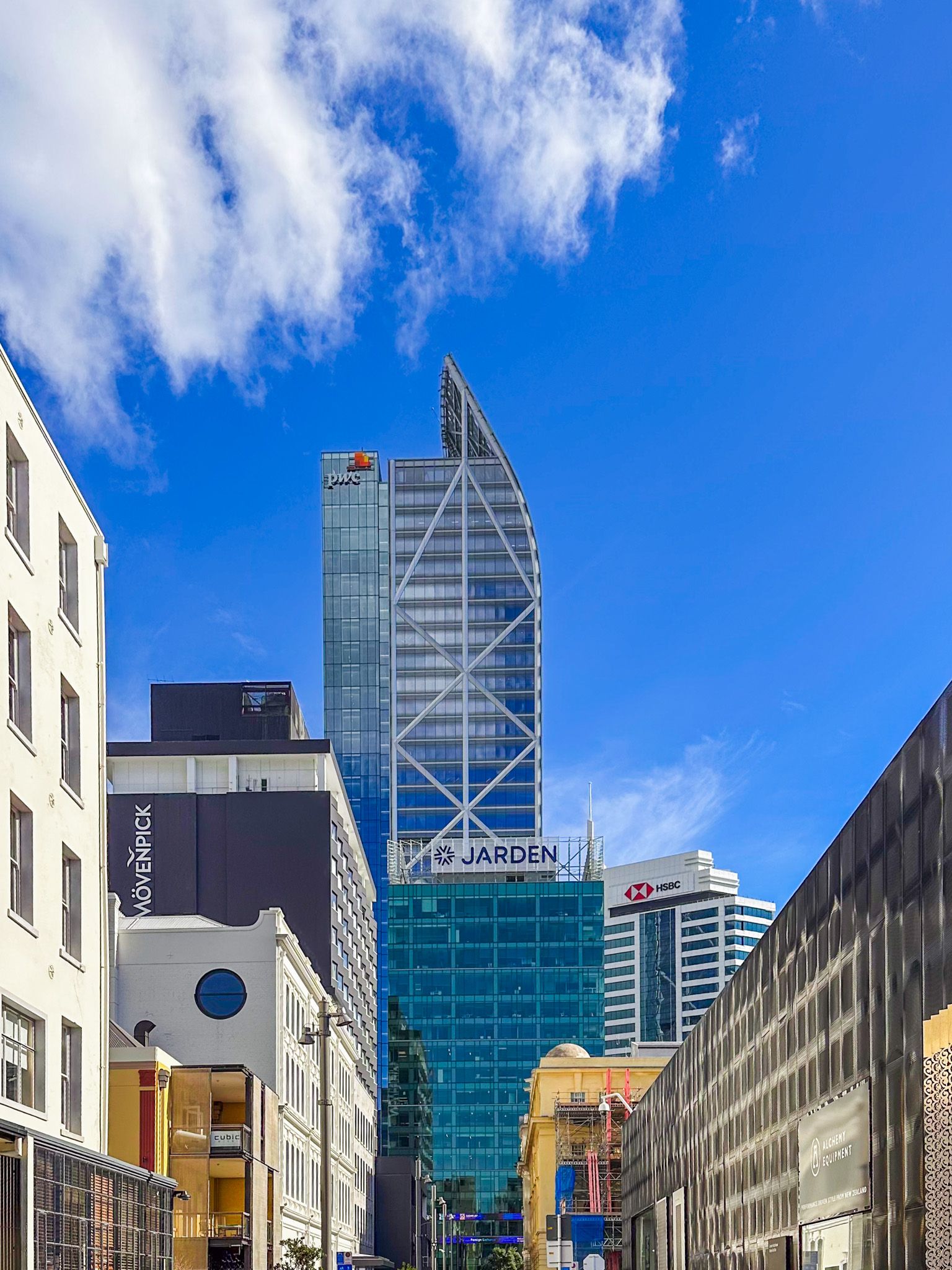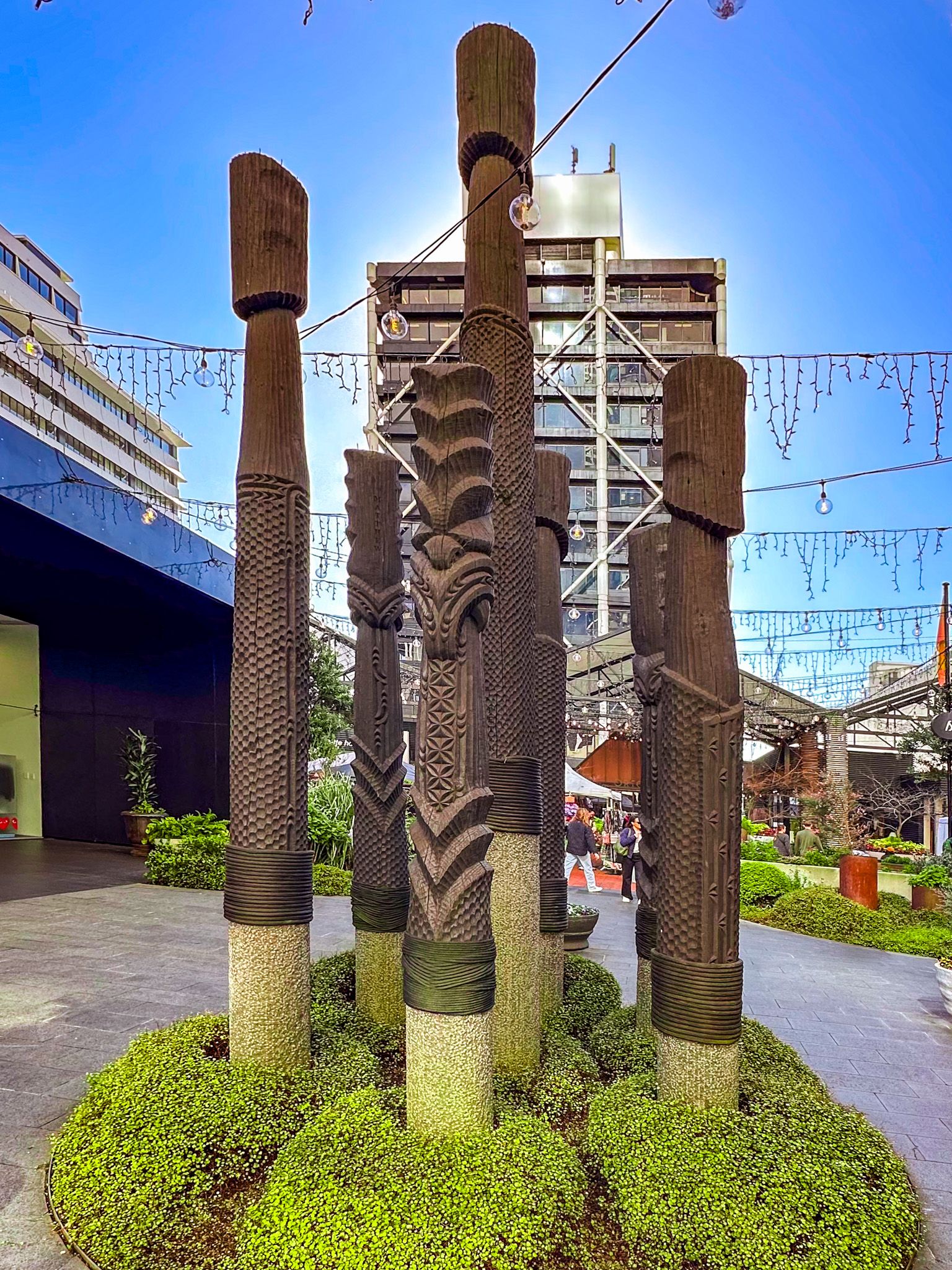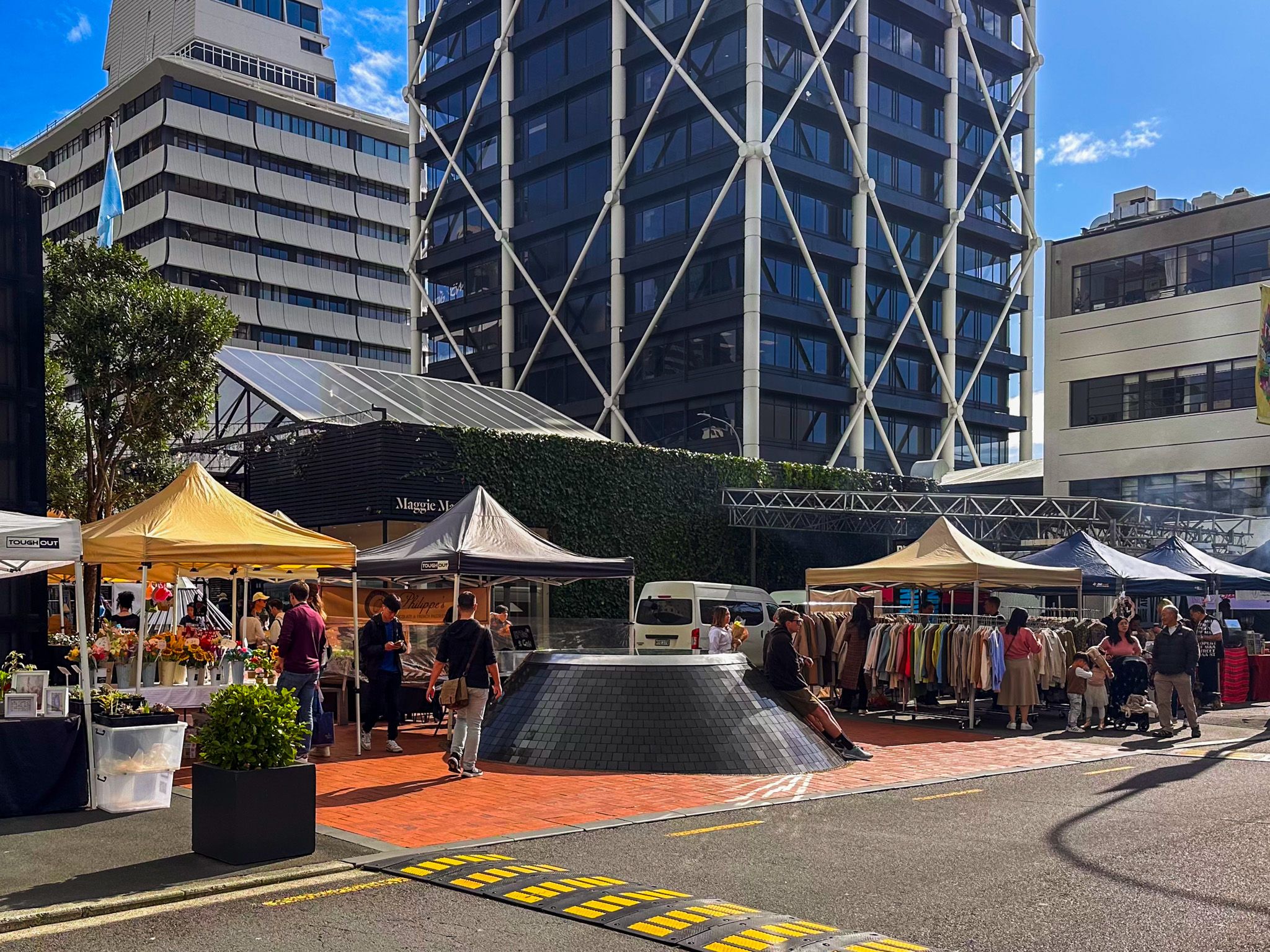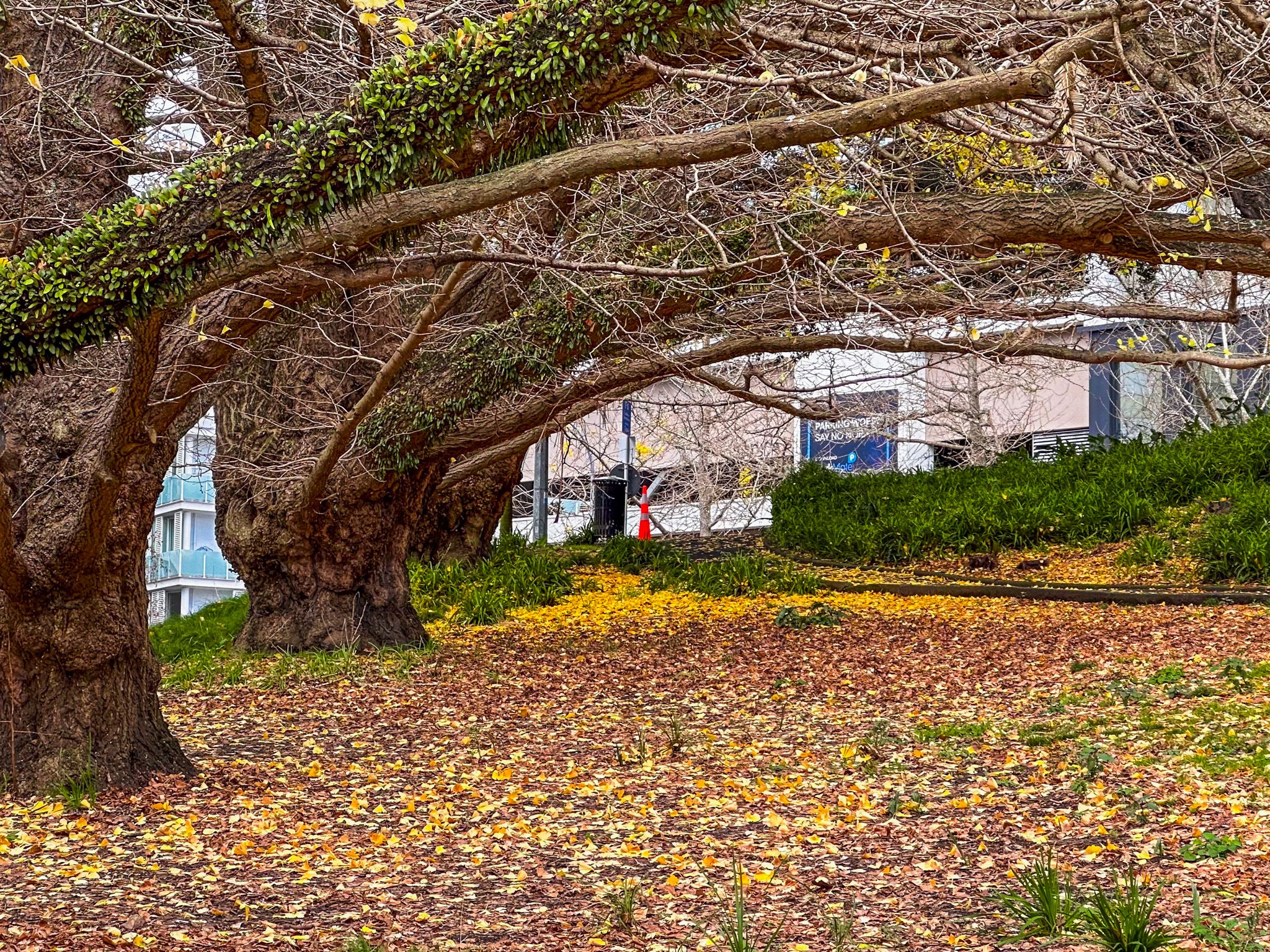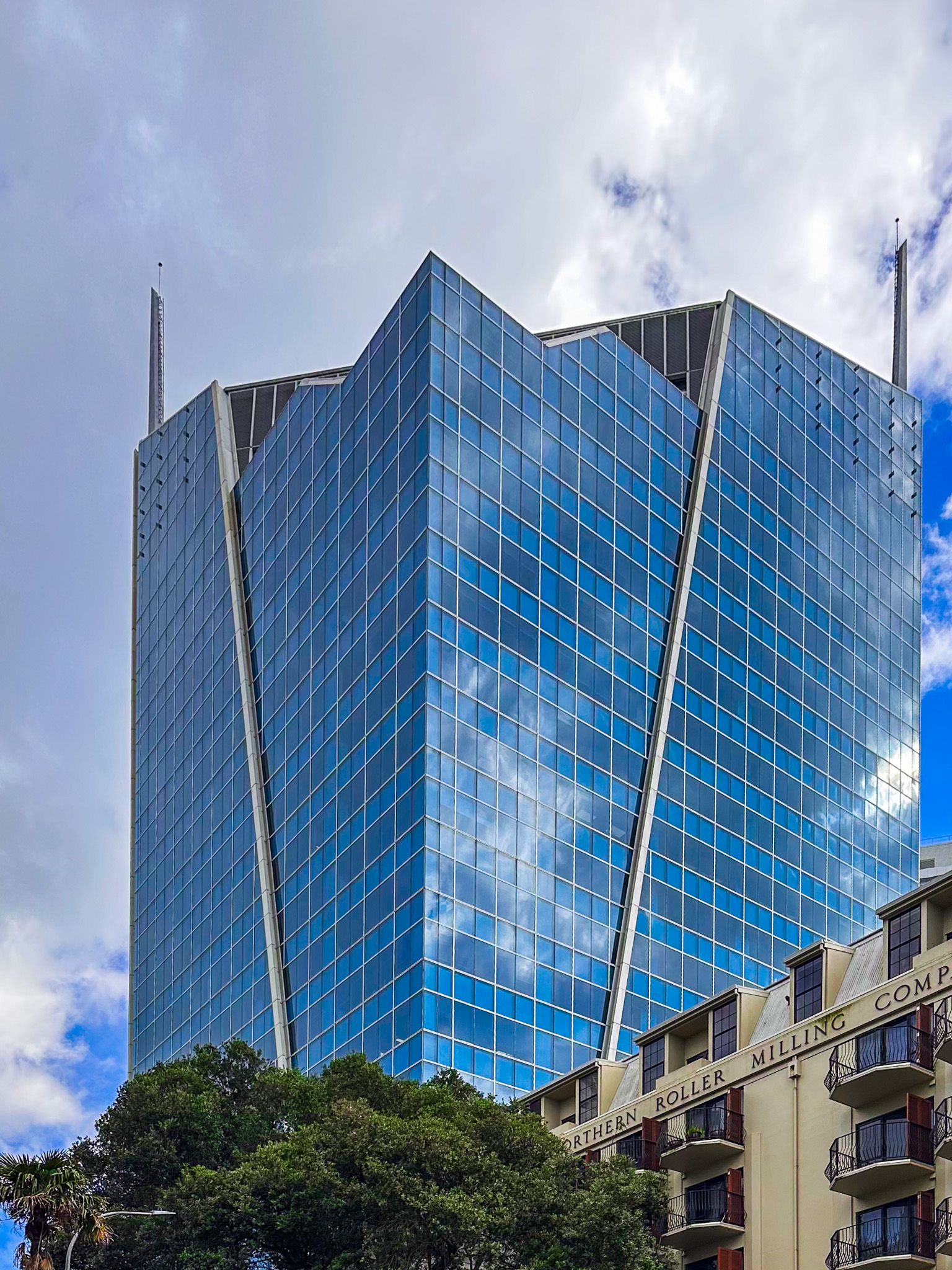Today, Britomart is a lovely 6.5-hectare multi-block precinct on the waterfront of Downtown Auckland. It sits between the Spark Arena and Commercial Bay, marked by Komititanga Paza at the end of Queen Street.
In recent history, the area was dominated by a large and unsightly bus terminal and the run-down historic Post Office Building. However, redevelopment around a then-new underground train station created a waterfront precinct of heritage, modern buildings and public spaces. Today, it provides an excellent shopping and food experience in the city, including a market on Saturday from 8 am to 3 pm. It is also the starting point for our two favourite inner city walks: west along the harbour as far as Westhaven and a loop to the south as far as Karangahape Road.
Britomart also has a fascinating earlier history. For Māori, it was Te Rerenga Ora Iti and a prominent headland in the Waitematā Harbour. It was the site of a Ngāti Whātua pā, and the name means '”the leap of the few survivors”. In 1680, Ngāti Whātua iwi were the victors in a battle with Ngāti Huarere. The defeated survivors leapt off the cliff to either their freedom or deaths.
In the 1820s, Ngāti Whātua were severely affected by Ngāpui attacks during the Musket Wars. The Treaty of Waitangi in 1840 guaranteed peace and provided an opportunity to undermine the Ngāpui relationship with the new government. Ngāti Whātua rangatira Āpihai Te Kawau granted 3,000 hectares for British settlement on the Waitematā, thereby founding Auckland, with the ceremony being held at Te Rerenga Ora Iti. Auckland was also selected as the new capital, initially intended to be at Okiato in the Bay of Islands.
Auckland's first church, St Paul's, was built on the point. In 1842, military barracks were built. In 1846, the more extensive Albert Barracks (where Albert Park is) was constructed. Both barracks were closed in 1870 as the risks of local conflicts dissipated.
The European name Britomart Point was given in 1848 after HMS Britomart surveyed the new capital's harbour. In the 1870s and 1880s, the point was quarried away to fill in nearby Mechanics Bay, providing land for the historic railway station and port expansion. With its astounding gnarled pohutukawa trees, Emily Reserve, accessed from Britomart on Emily Place, is where the top of the point would have been. There is also a history panel and monument to John Chruster, the first reverend at St Paul’s.
In 2018, Ngāti Whātua-o-Ōrākei and Ports of Auckland created Te Toka o Apihai Te Kawau on Quay Street, in front of Bledisloe Wharf. The memorial commemorates Auckland's founding and includes a mauri rock that marks where Rerenga Ora Iti met the water and the city began. A memorial to the sinking of the Rainbow Warrier is also just to the east.
